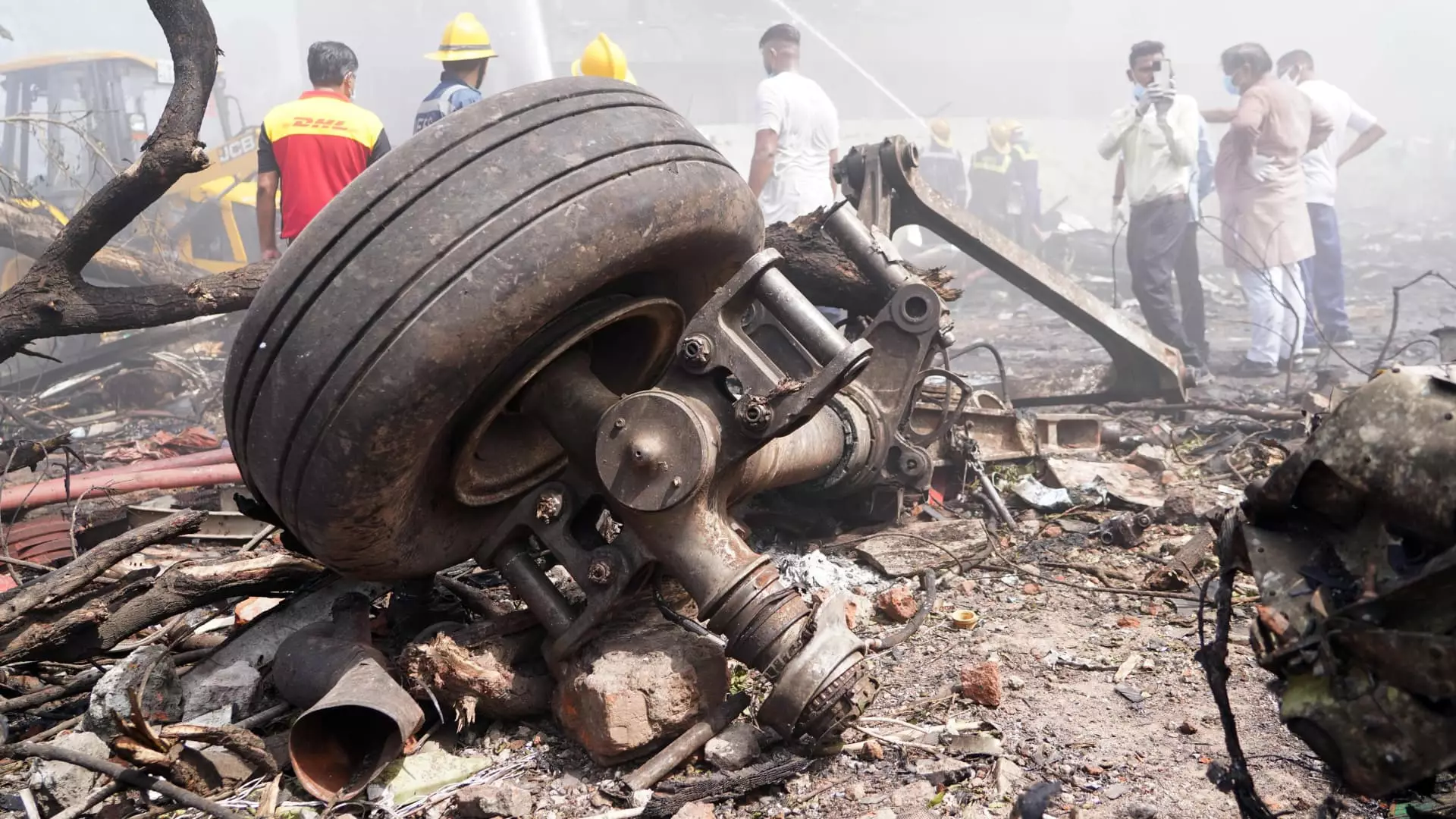In a shocking turn of events, an Air India Boeing 787 Dreamliner, carrying 242 passengers, crashed shortly after takeoff, leaving a trail of devastation. What was meant to be a routine flight to London transformed into a nightmarish horror, claiming the lives of all but one on board. This incident, the first of its kind involving the Dreamliner, serves as a grim reminder of the fragility of human endeavors in aviation and raises urgent questions about safety protocols and corporate responsibility within the industry.
This tragic event is particularly disheartening not just because of the loss of life, but also due to the fact that it comes amidst a backdrop of growing confidence in a new generation of aircraft. The Boeing 787 series, known for its fuel efficiency and modern technology, has been a linchpin in global aviation for over a decade. With Air India looking to expand its luxurious fleet, this crash poses significant implications not just for the airline, but for an industry already grappling with its own credibility issues.
Pushing the Limits: A Long-Standing Trust
One cannot ignore that aviation has always been a realm of meticulous engineering and relentless innovation. The Dreamliner was expected to herald a new era in air travel, providing airlines with lighter, more efficient aircraft designed to cut down on fuel costs and enhance passenger comfort. Yet, the tragic crumbling of this aircraft challenges that very narrative. As experts sift through the wreckage and the black boxes in a bid to piece together the final moments of the doomed flight, the necessity for a profound introspection within Boeing and its stakeholders comes to light.
The various past troubles Boeing faced, particularly with the 737 Max, cannot be ignored either. They stand as a testament to the dangers of compromising safety for profit, which raises the question: what has changed in corporate culture at Boeing since those dark days? The air travel industry should have learned from these failures, but if this crash teaches us anything, it is that complacency remains a significant threat. The whispers of corners being cut in the name of efficiency, echoed by a whistleblower, resonate ominously now.
The Investigation: A Fight for Answers
As investigators dive into the inquiry, we must beckon a delicate balance between transparency and accountability. This incident highlights the pressing need for investigating bodies to uphold stringent standards that prioritize passenger safety over corporate interests. The call for detailed analysis, including the evaluation of both pilot actions and aircraft systems, should leave no stone unturned.
The preliminary data showing the unfortunate aircraft losing altitude within seconds of gaining speed brings forth both an urgent alarm and an essential inquiry: What are the contributory factors that lead this aircraft to plummet? Pilot error, mechanical issues, or perhaps even the climate conditions of overbearing heat must be thoroughly scrutinized. These questions will not only elucidate the specific causes of this tragedy but also set precedents for safety standards in aviation moving forward.
Corporate Responsibility and Accountability
We must also reflect on the larger narrative at play—the one that involves corporate responsibility in ensuring that their products are delivered to the highest standards. Boeing, one of the leaders of the aviation industry, must rise to the occasion and demonstrate an unwavering commitment to safety. The past has shown that profit margins often overshadow safety measures. This incident should serve as a pivotal moment for the company to prioritize public welfare over shareholders’ interests.
Moreover, this crash shines a light on the potentially fatal ramifications of an industry seemingly seduced by technological advancements. The balance of innovation with responsibility must never tilt too heavily towards expediency. Given the numbers of Dreamliners still in operation, the implications of this tragedy extend beyond a single crash, deeply affecting public perception of air travel safety and trust in manufacturers.
In attempting to rejuvenate a tarnished reputation, Boeing must accept this moment as an opportunity for profound transformation. This entails establishing robust protocols that ensure absolute adherence to safety practices, not just during routine inspections but as a core frame of their operational ethos. The aviation industry thrives on trust, and any shred of negligence could spiral into another tragedy, echoing through time and reminding us of the lives that were lost due to hubris.
As news of the tragedy circulates globally, we must advocate for a shift within the industry—one that emphasizes the importance of accountability, ultimately fostering a safer environment for passengers aboard these modern marvels.

